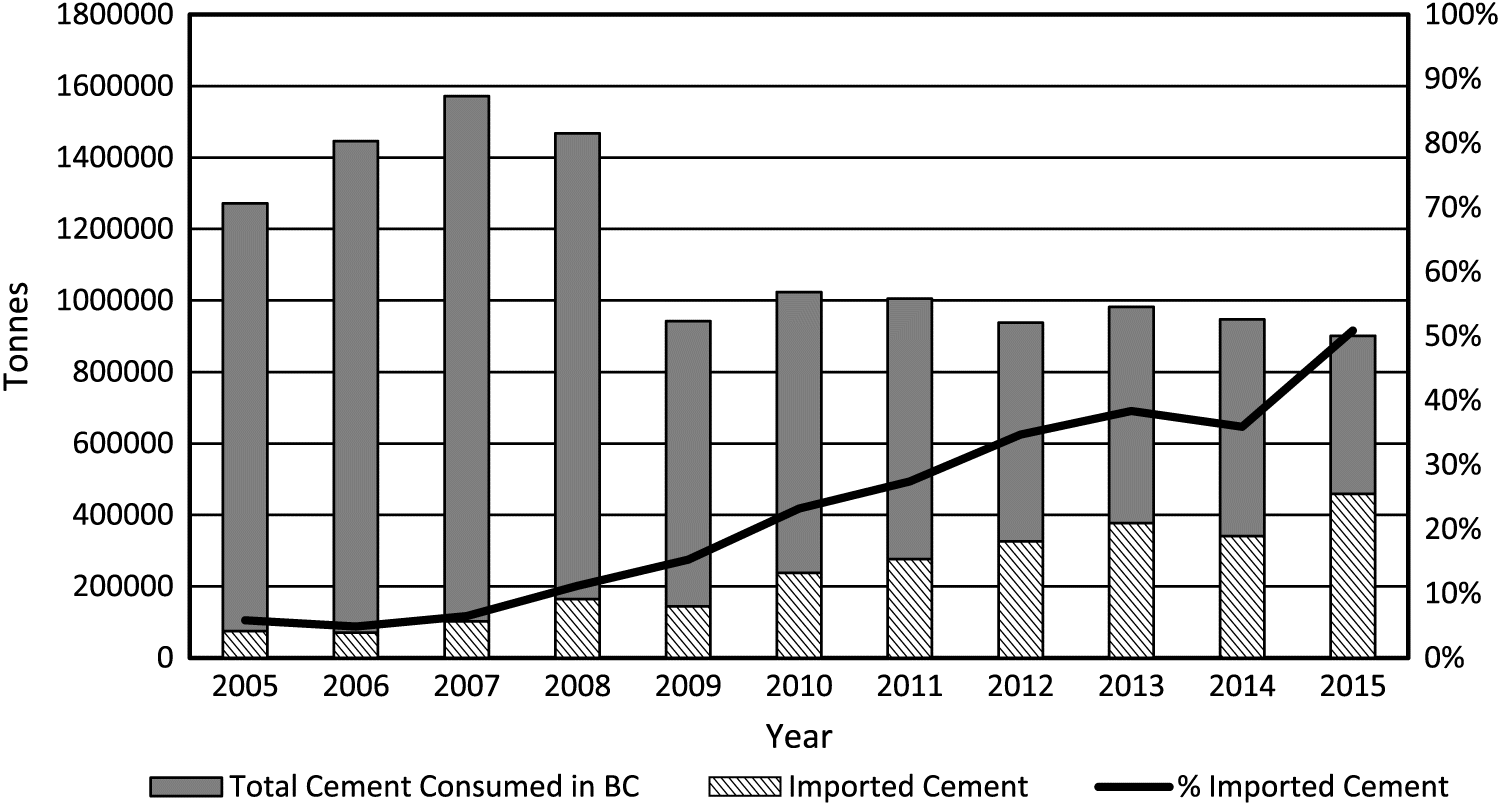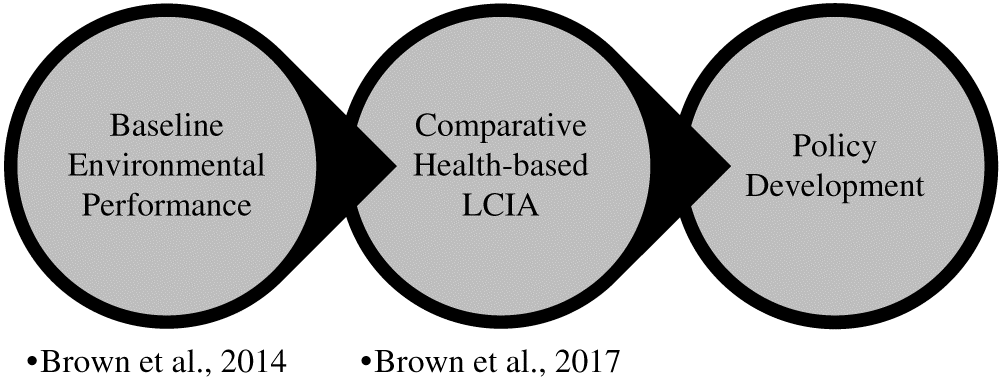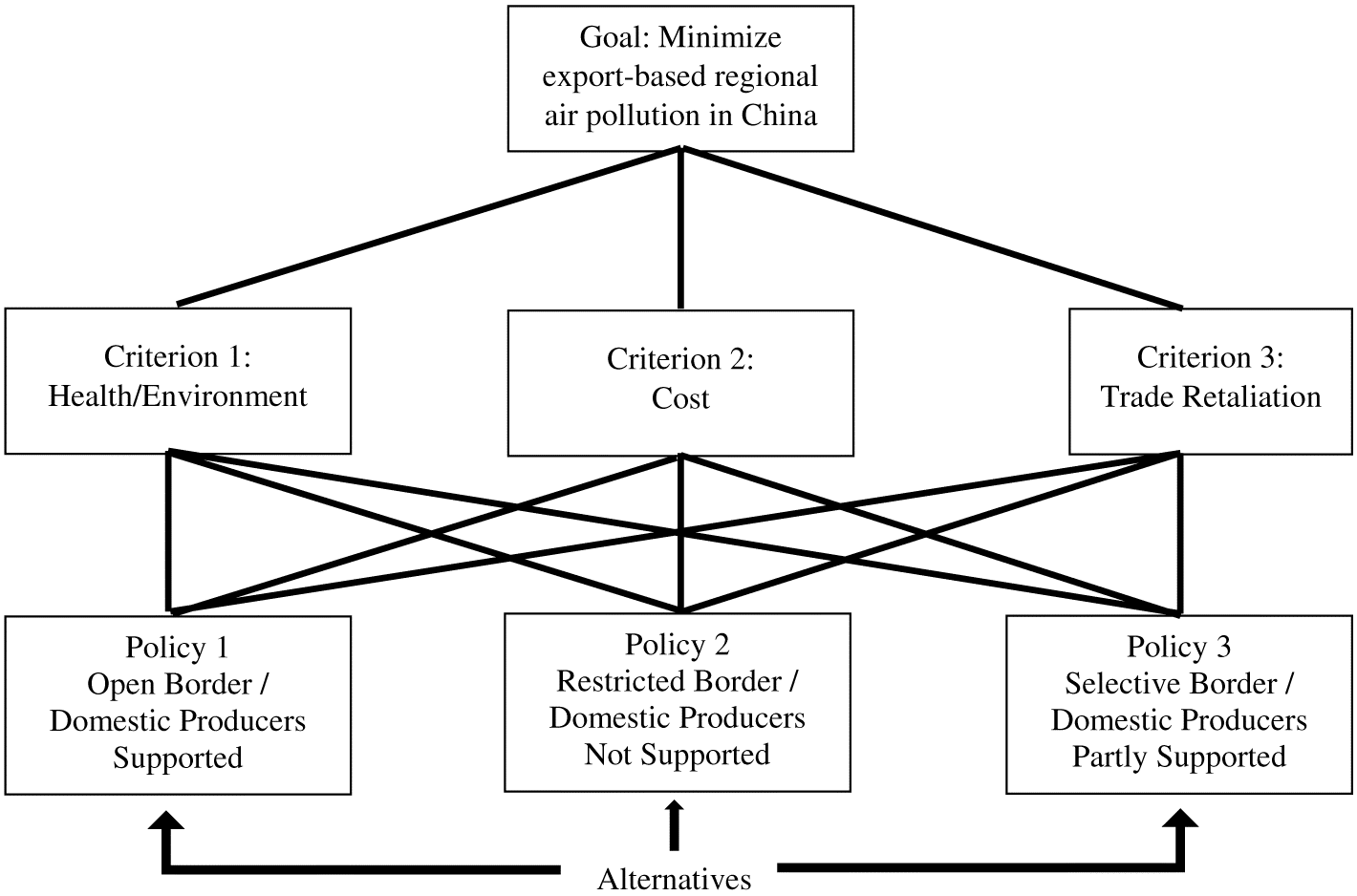The
Canadian Environmental Protection Act, 1999 (CEPA) was developed for the dual purpose of pollution prevention and the protection of the environment and human health in Canada (
ECCC 2014). In Part 7, Division 6 of CEPA, the Minister has the authority to act if Canadian sources are generating air pollution outside of Canada or if the air pollution violates an international binding agreement on Canada (
ECCC 2014). As an example of the latter, Canada entered into the
Agreement Between the Government of Canada and the Government of the United States of America on Air Quality (
ECCC 2013a,
2013b). The purpose of the agreement is to minimize transboundary air pollution between the two countries for mutually beneficial purposes.
Canada recognizes international air pollution issues and has provided a legislated mechanism for intervention, but it is limited to the movement of air pollution across a physical border. However, regional air pollution generated during the manufacturing of goods, which are imported to Canada, is not considered. Naturally, Canada has no direct control over how foreign jurisdictions operate. That said, if an imported product is manufactured in a manner that is not consistent with Canadian air pollution standards then a contradiction may occur. Moreover, the unintended effect of trade could potentiate pollution in the exporting country.
Intuitively, trade with developed markets poses a lower risk of pollution displacement than with emerging markets. As one of Canada’s largest trading partners, and a developed market, the United States has a strong federal regulatory system to manage and control air pollution. The
Clean Air Act (CAA) administered by the Environmental Protection Agency (EPA) is authorized to limit emissions from industrial operations and requires that individual states meet the National Ambient Air Quality Standards (NAAQS) (
EPA 2016). In Canada, the regulatory approach is analogous with that of Environment and Climate Change Canada (ECCC) and the Canadian Ambient Air Quality Standards (CAAQS) (
ECCC 2013a).
As a result of similar regulatory frameworks, there is a reasonable expectation that products are manufactured with comparable impacts. However, with an emerging market such as China that has no demonstrable equivalent, the uncertainty and associated risks increase. In the absence of equivalency, other mechanisms are needed to verify some level of confidence as to the embodied impact of the product. Moreover, if the process of assessment identifies additional impacts to air quality from manufacturing, the government may need to implement policy or regulation to dissuade the importation of such products.
Impact of increasing exports on China’s air quality
In China, noxious air emissions negatively impact air quality and pose a substantial health risk to the population. It estimated that poor air quality contributes to 1.6 million deaths per year in China (
Rhode and Muller 2015). Although the percentage of deaths with respect to the total population is relatively low, what China experiences annually in air pollution mortality is equivalent to approximately 5% of Canada’s total population (
Statistics Canada 2015). Furthermore, in 2012, China accounted for roughly 23% of the seven million deaths linked to air pollution worldwide (
World Health Organization 2016).
As an economic powerhouse, China has become the largest exporter in the world (
Wang et al. 2015). In 2012, China exported over two trillion in US dollars by volume (
Song et al. 2015). However, this market dominance has not been achieved without a serious impact on air quality.
Huo et al. (2014) postulated that the embodied emissions of the exports contributed to 24% of total NO
x emissions, 25% of total SO
2 emissions, and 23% of total PM
2.5 emissions in China. These estimates excluded emissions from capital project development and international transportation.
Huo et al. (2014) further suggested that major factors in China’s poor air quality can be attributed to high emissions per unit product and a high proportion of emissions-intense industry.
The reason that China has become the world’s factory is largely attributed to the pollution haven hypothesis, in that emissions-intense industry relocates from developed countries to take advantage of lower production costs and less stringent environmental regulations in emerging markets (
Wang et al. 2015). This is also aligns with the concept of carbon emissions leakage between regulated and non-regulated jurisdictions in consideration of energy-intensive and trade-exposed (EITE) industry (
Brown et al. 2014). However, unlike greenhouse gases (GHGs), which add to the global concentration of emissions, leakage associated with regional air pollutants such as oxides of nitrogen (NO
x), sulphur dioxide (SO
2), particulate matter (PM), and carbon monoxide (CO) have localized effects.
EITE cement manufacturing industry
As an EITE industry, cement manufacturing provides a unique opportunity to study the potential for increasing regional air pollution in the exporting country. Given that the cement industry is global and energy intense (which is tantamount to emissions intense), relocating manufacturing to emerging markets would be expected (
Brown et al. 2014). Consequently, China has become the largest producer of cement, with billions of tonnes of capacity, and accounts for approximately 60% of global production (
Xu et al. 2015). In contrast, Canada’s relatively small cement industry, with a total capacity of less than 20 million tonnes, operating in a more stringent regulatory environment, is under considerable competitive pressure from imported cement (
Brown et al. 2014).
This competitive pressure on the cement manufacturing industry is demonstrated by the implementation of the carbon tax in British Columbia (BC), Canada. In 2008, the BC Government introduced a tax on the fossilized carbon component of fuels. Initially at $10 CAD per tonne of carbon dioxide equivalent (CO
2e) emissions, the carbon tax incrementally increased by $5 CAD each year to its present rate of $30 CAD per tonne of CO
2e. As indicated in
Table 1, the tax rate is based on the CO
2e emissions intensity of the fuel.
Since the inception of the carbon tax in 2008, the BC cement industry has experienced considerable deterioration of domestic market share to imported cement (
Fig. 1). In 2005, imported cement accounted for approximately 5.9% of total domestic cement consumption (
CAC 2016). At the end of 2015, with carbon tax at $30 CAD per tonne CO
2e, imports accounted for approximately 50% of total domestic cement consumption (
CAC 2016).
Although there may be several factors that influence market share,
Fig. 1 clearly shows a trend between the percentage of imports and the increase in the tax from $10 CAD per tonne in 2008 to $30 CAD per tonne of CO
2e. Since 2012, with carbon tax at a fixed price of $30 CAD per tonne CO
2e, imports have not dropped below 35% of total domestic cement consumption. The critical difference being exploited here is that imported cement is not subject to carbon tax because the tax only applies to the fuel combustion CO
2e associated with manufacturing.
Accompanying the drop in domestic cement production is an apparent drop in total CO2e. However, this is only because imported cement, and its embodied CO2e, is not accounted for by BC GHG reporting mechanisms. It is plausible that, in the case of the EITE cement industry, the intended purpose of the carbon tax to reduce GHGs is ineffective. Moreover, if the CO2e intensity of the exporting manufacturing facilities is higher than domestic producers, then the carbon tax has resulted in a net increase in global CO2e emissions.
Extending the scope of leakage beyond production and CO
2e emissions to include regional noxious air pollutants (NO
x, SO
2, PM, and CO) further exacerbates the issue. According to
Brown et al. (2017), the impact on regional air quality from cement production in China, in terms of disability adjusted life years (DALYs) from these four regional pollutants, is twice that in Canada. Based on this, unchecked importation of cement from China will have a net increase on the health and environmental impact of cement production.
Emissions leakage protection: plausible policy scenarios
For Canada, there are three general policy directions that can be taken to minimize the potential for emissions leakage associated with the international trade of cement. These policies include the following (
Table 2):
Policy 1—provide direct support for local cement manufacturing to cut costs and increase competitiveness;
Policy 2—create barriers for importation such that foreign manufacturers either comply with Canadian standards or are dissuaded from exporting; and
Policy 3—a combination of 1 and 2.
Within each policy, there are various supporting mechanisms available to achieve the intended outcome. For Policy 1, these mechanisms may include the relaxation of emission standards, subsidies, and (or) direct funding. In support of Policy 2, mechanisms may include prohibiting cement imports, environmental tariffs, and (or) a verification process, such as life cycle impact assessment (LCIA) that can demonstrate equivalency with Canadian standards. Lastly, Policy 3 may include a combination of Policy 1 and Policy 2 mechanisms.
This paper utilizes the cement manufacturing sector to evaluate the efficacy of these three plausible policy scenarios and their supporting mechanisms. The ideal outcome of this process will be a well-supported policy and mechanisms that best mitigate emissions leakage of the regional noxious air pollutants to foreign jurisdictions. At the same time, the policy will maintain an economically strong trading partnership. However, minimizing regional air pollution loading in emerging markets, such as China, is the key objective. Ultimately, the valuation of imported products needs to incorporate the potential impacts generated by manufacturing.





